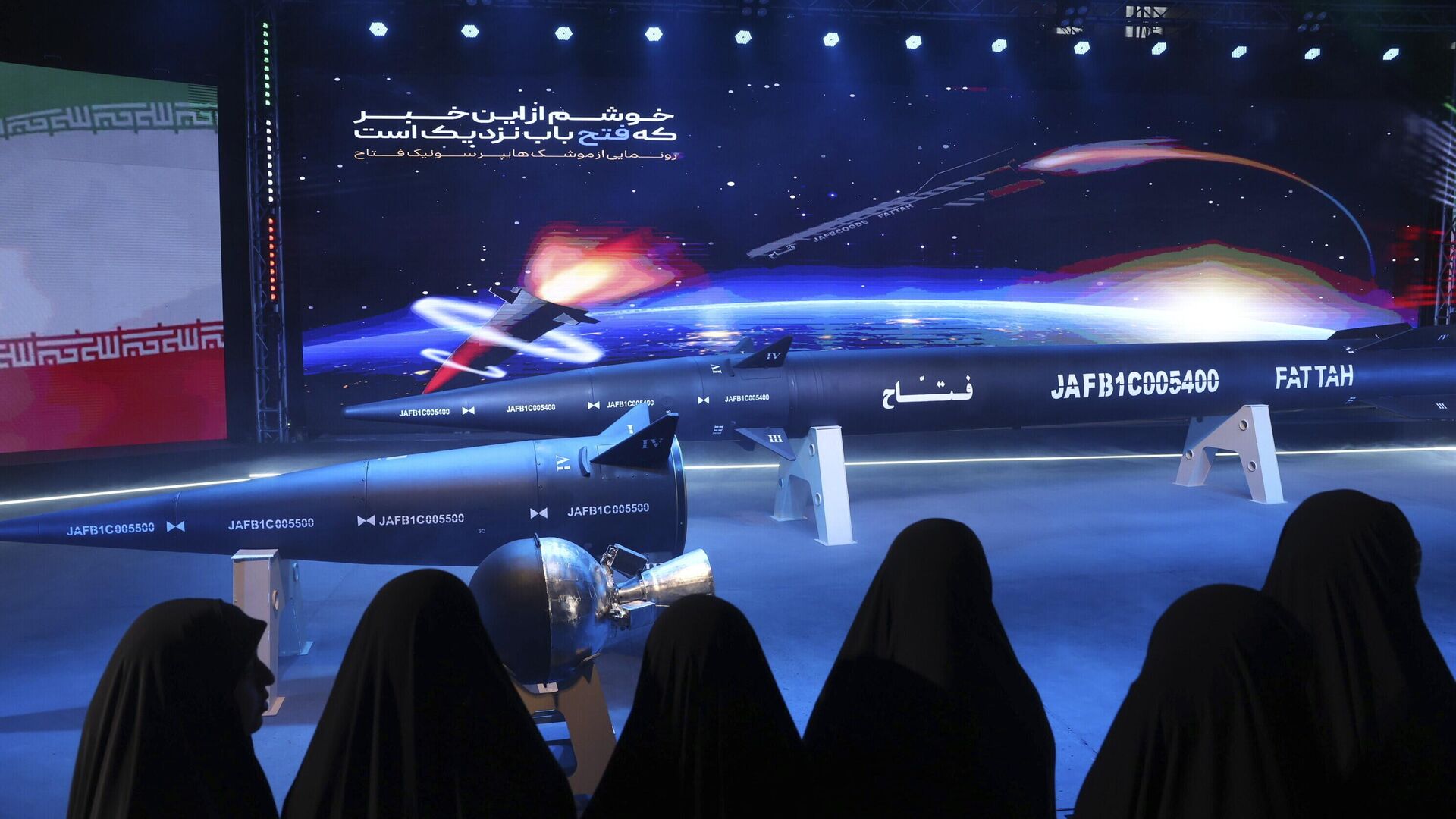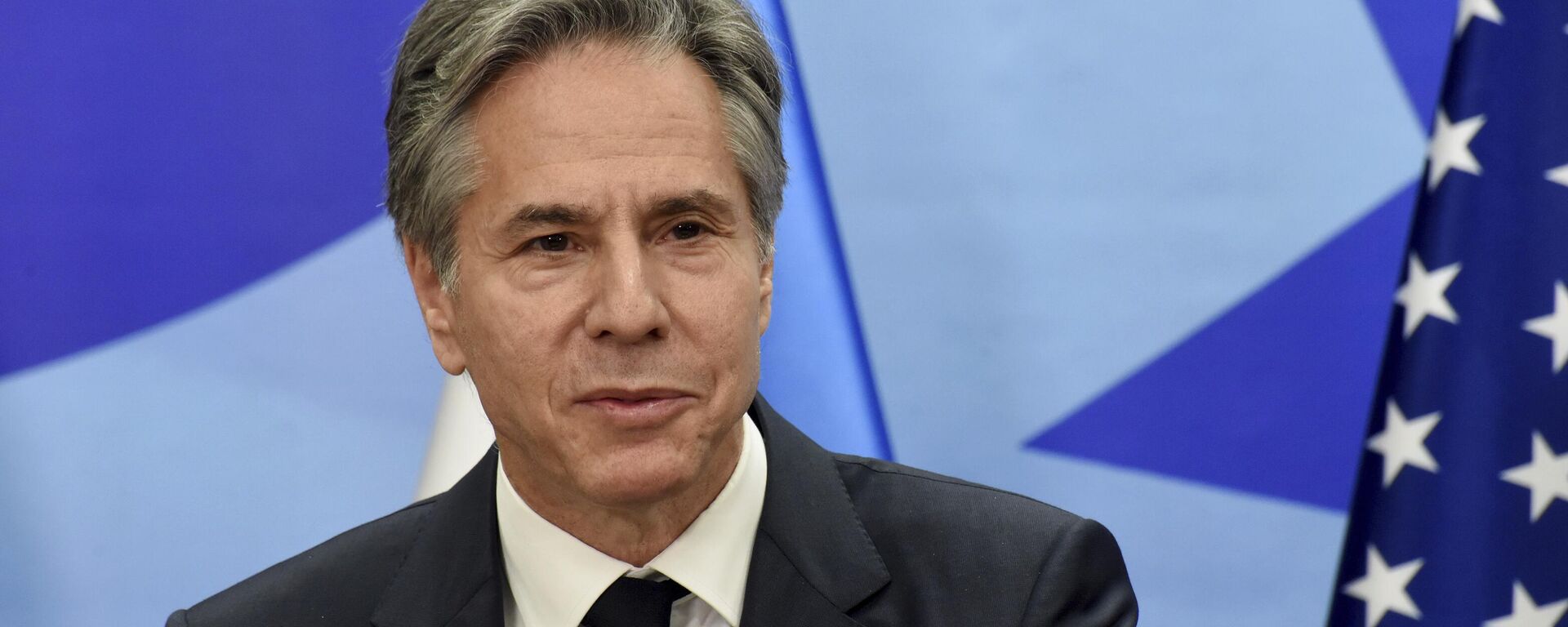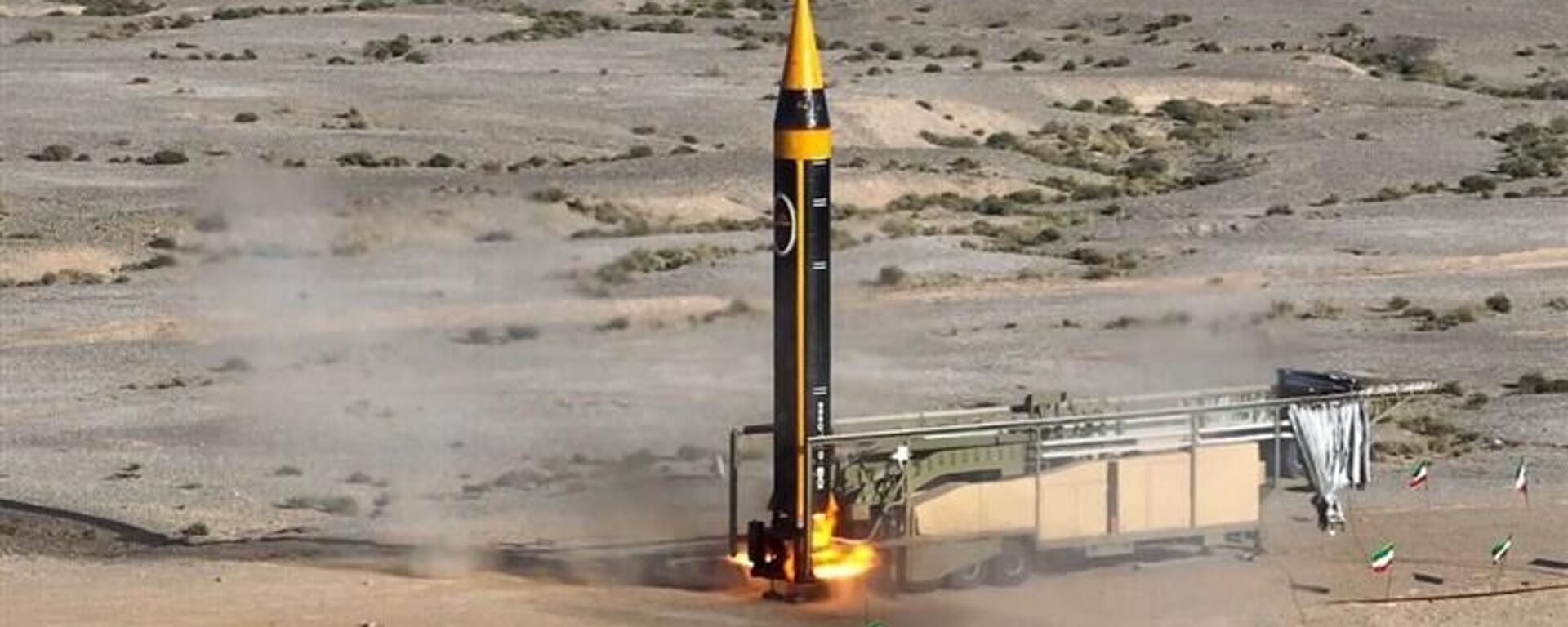Iran Joins Hypersonic Club With ‘Fattah’ Missile – Video
14:48 GMT 06.06.2023 (Updated: 15:05 GMT 06.06.2023)

© AP Photo / Hossein Zohrevand
Subscribe
Facing a crushing, decades-old arms embargo put in place by its pre-1979 revolution weapons suppliers, Iran has worked to create an array of ground and sea-launched ballistic and cruise missiles, entrusting them with strategic deterrence against foreign aggression.
The Islamic Revolutionary Guard Corps’ Aerospace Force unveiled a new hypersonic missile on Tuesday, bringing Iran into the small handful of nations with hypersonic missile capabilities.
The solid-fueled missile, named the "Fattah" (lit. "Conqueror" or "Victory Giver") is said to have a 1,400 km range, the ability to accelerate to Mach 13-15, maneuver in flight, and defeat all air and missile defense shields.
“We build missiles so that we do not suffer from aggression by enemies, and so that…enemies would not even think of an act of aggression against the Islamic Republic,” President Ebrahim Raisi, who was on hand at Tuesday’s unveiling ceremony, said. “Iran’s military, defense and missile power creates deterrence, of course, it creates deterrence not only from invasion but also from the thought of invasion,” he added.
“Today, we feel that [Iran’s] deterrence power has been developed, which is the source of security and sustainable peace for regional countries,” Raisi said.
Raisi was joined at the event by IRGC Commander-in-Chief Hossein Salami and IRGC Aerospace Force commander Amir Ali Hajizadeh.
Hajizadeh said Iranian rocket scientists’ work “will not end with the construction of this missile,” and that Tehran “will continue on this path so that no enemy even imagines attacking Iran.”
Test footage of the new missile was released by Iranian media, showing its launch, touchdown on target, the testing of its maneuverable engine, and a computer graphic of the weapon during flight demonstrating how the warhead separates from the booster taking it into space.
Iran has unveiled a home-grown hypersonic missile, which it says can beat all existing air defense systems.
— PressTV Extra (@PresstvExtra) June 6, 2023
The missile, dubbed Fattah, has a range of 1,400 kilometers and boasts high speed, accuracy and maneuverability as well as stealth capabilities. pic.twitter.com/zzGWtqOImc
The missile’s unveiling comes amid an unprecedented geopolitical shakeup in the Persian Gulf region, with Iran inviting former arch-rival Saudi Arabia into a new naval alliance after restoring relations, a prospect which has sparked indignation and confusion in Washington. Iran and Saudi Arabia moved to restore ties in April in a breakthrough agreement brokered by China. A month later, Riyadh and other members of the Arab League moved to restore Iranian and Russian ally Syria to the regional body.
At the same time as Iran has moved to shore up ties with other regional powers, Tehran has been growing increasingly disillusioned over the prospects of a US return to the Joint Comprehensive Plan of Action (JCPOA) nuclear deal – which offered Tehran sanctions relief in exchange for limits on uranium enrichment and stockpiling activities for the country’s peaceful nuclear program.
Last month marked the fifth anniversary of Washington’s exit from the JCPOA, with the Biden administration reneging on commitments to return to the agreement as soon as possible, and the White House announcing last week that it no longer considers returning to the deal a priority.
Instead, the US and Israeli militaries have ramped up drills practicing strikes on Iranian nuclear facilities, with Tel Aviv laying out a special $1.5 billion fund to this end separate from the military budget. Iran has warned repeatedly that any such attack will be met with a crushing Iranian response.
The Pentagon estimates that Iran possesses “over 3,000” ballistic missiles of various ranges and classes, including long-range missiles with a range of up to 4,000 km. Iran began developing missiles during the 1980-1988 Iran-Iraq War, and currently sees them as its primary deterrent against aggression after its leaders issued religious edicts known as fatwas pledging not to pursue weapons of mass destruction.



